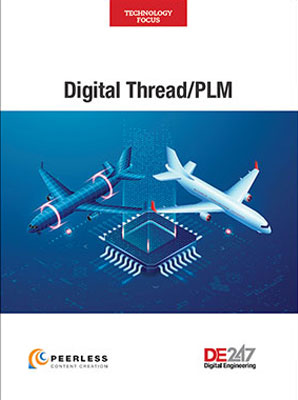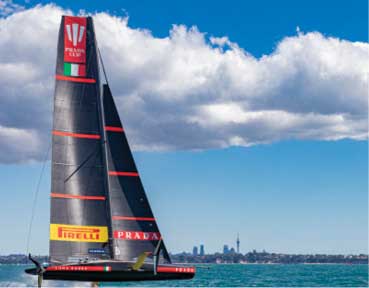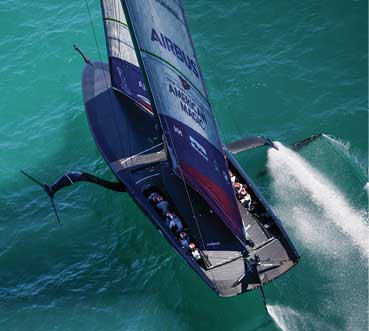CFD Keeps Boats Afloat in the America’s Cup
Despite COVID disruptions, sailing teams discover new ways to simulate the unexpected.
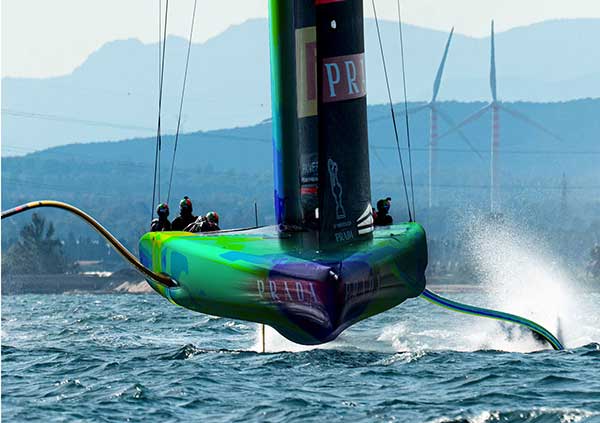
The Luna Rossa Prada Pirelli engineering team used Altair OptiStruct to optimize the composite structures of the boat. Image courtesy of Altair.
Latest News
March 1, 2021
In July 2019, when America’s Cup announced the 2020 race dates, the biggest news headlines were the protests in Hong Kong and Moscow, and North Korea flexing its nuclear muscles with test missile launches. At the time, COVID-19 had not yet appeared.
Participating teams imagined their boats would be in the sun-soaked Mediterranean waters of Cagliari, Sardinia, with no delay. Then, in March 2020, came the unimaginable hurdle—the first wave of the pandemic.
The New Zealand team’s full-scale boat Te Aihe was en route to the race venue on a container ship when travel and transportation disruptions occurred. The team was left without their physical boat for months, and lost precious time for physical testing, practice runs and data analysis. This was just one example of the challenges for the participants in the 36th America’s Cup, which is set for March 6, 2021, in Auckland, New Zealand.
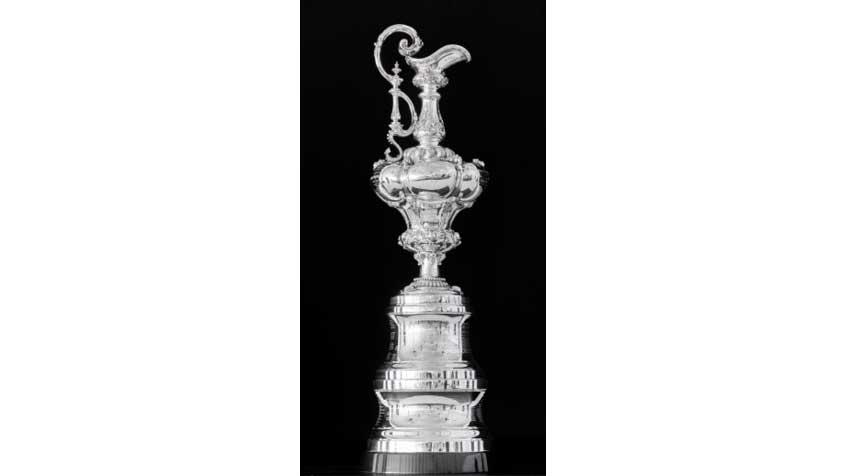
“All of the early test races in the America’s Cup were cancelled in 2020 so the teams had much less opportunity to see how their designs compared to the other teams. This means the boat designs that will race in 2021 are more of a direct result of a simulation-based design process, and have not gone through the filter of 1+ years of real racing to refine the designs,” says Riley Schutt, U.S. Sailing Team’s IR&D performance analyst, and fluid modeling and design specialist.
Also notable is the AC75 Class Rule, which was published in March 2018. It sets “strict limitations on the number of components that can be built, including hulls, masts, rudders, foils, and sails, thus encouraging teams to do more R&D in simulation and subsequently less physical construction and testing.”
As a cost-control measure, the rules also put a “prohibition of tank testing, wind-tunnel testing and similar fluid dynamic testing.”
All these factors suggest that for the 36th America’s Cup, most of the competing teams’ preliminary races took place not in the open water but in pixels and meshes inside high-performance computing (HPC) clusters, away from the public’s eyes.
Remote Before COVID
Long before COVID and social distancing, remote working became the norm among the design teams involved in the America’s Cup. That’s because the teams usually involve globally dispersed talents, even if they represent specific countries.
“All the design team members are constantly involved in projects from different parts of the world. It’s quite common to have to deal with constraints such as different time zones, as some team members and many suppliers are based in different locations worldwide,” says Alessandro Franceschetti, head of structural engineering for the Luna Rossa Prada Pirelli team from Italy.
The Italian’s team official technology suppliers include simulation software maker Altair.
“With the capabilities of Altair OptiStruct, we maximize the use of sub-structuring and sub-modeling among others to be able to make progress in parallel with different design components without neglecting the influence of the rest of the general structural assembly of the yacht,” says Franceschetti. “The extensive usage of the super elements allowed the structural department to efficiently exchange models and meet the deadlines with high-fidelity simulation results.”
Schutt is preparing his team for the Tokyo Olympics and is not competing in this year’s Cup; the U.S. is represented by The New York Yacht Club American Magic. However, he has ample experience with remote working in a collaborative design development.
“It is magnified this year because we cannot travel and be with each other in person. We are spread all over the world, so we rely a lot on cloud-based infrastructure that allows us to share design,” he says.
Schutt is a resident of the Outsight Network, which is a community of resident teams with the Autodesk Technology Centers. Before COVID, the Technology Centers’ physical spaces in San Francisco, Boston and Toronto, served as places where program participants could come to learn and use manufacturing equipment (such as professional-grade 3D printers and CNC machines) to test and prototype their design concepts.
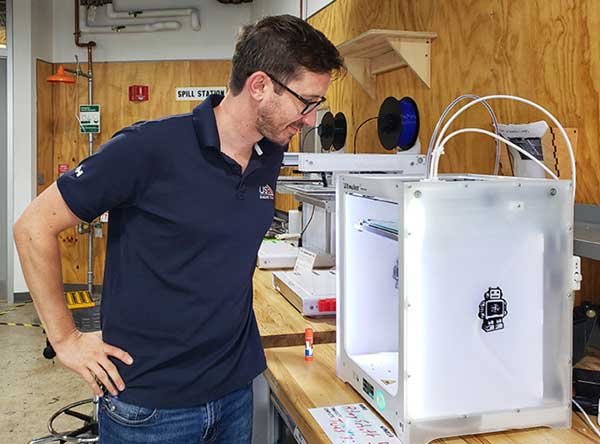
But in response to COVID, the program evolved with expanded virtual programming, networking and collaboration opportunities, while it also maintained its access to subject matter experts.
“Prior to COVID, we were primarily focused on North America-based teams, but taking our work remote has allowed us to support teams from across the globe. Having innovative teams from Asia, Europe, Africa and South America join the Outsight Network has enhanced the knowledge and expertise available to the other residents. This has enabled us to significantly expand the Outsight Network, adding 63 new resident teams since COVID began and creating a community of over 650 individual residents,” says Gabrielle Patin, Autodesk Community Manager.
Digital Twin Unaffected by Restrictions
INEOS TEAM UK, another contender in the 36th America’s Cup, is supported by Siemens Digital Industries Software.
“As a team we were well-placed for people working remotely but the cancellation of the planned events in Cagliari and Portsmouth affected us, as it did all the teams, in that we lost racing time against our competitors, which meant we did not have a good benchmark for where we were at compared to them,” says Max Starr, INEOS TEAM UK CFD Engineer. “COVID of course also severely reduced the time we had on the water with our first boat, which would have helped with our testing program overall.”
To make up for lost time, INEOS TEAM UK began to rely more on simulation.
“A lot of people who would have been involved in the physical testing were building more complicated computational models in-house and a lot of that then fed into CFD (computational fluid dynamics) … It just meant that we were busier in the digital world,” says Starr.
Starr and his team are using Siemens’ NX software for the boat’s design, and product lifecycle management (PLM) portfolio Teamcenter to keep everyone in sync with the design iterations. They also use Siemens’ Simcenter STAR-CCM+ software for CFD.
“After the Christmas Cup, we went back to look at a lot of our old simulations setups and we ran a lot of ‘what-if’ scenarios to try and understand where the performance deficit came from,” says Starr.
“It was a case of trying to run a lot of simulations to help validate what we were seeing in real life ... Because we had the digital twin of the boat, we could run many ‘what-if’ scenarios to try and understand what we were seeing on the water versus what we were seeing in the models to try and correlate between the two,” he adds.
Reading the Wind and the Water
The race site is usually an unpredictable factor, perhaps more so in the 2021 race. With limited travel options in the last year, it’s safe to assume few teams except the New Zealand team, which is located on-site, have had the opportunity to thoroughly study the characteristics of the water.
“The site of the race is an important variable to take into account. A proper understanding of the site conditions allows the design team to target specific performance goals,” says Franceschetti. “At the beginning of the campaign, a detailed analysis of many aspects of the location of the race is undertaken—in particular, the weather conditions expected at the time of the race. The statistical analyses made about the features of the location of the race, drive some of the key decisions of the competing yacht’s design.”
“The likely wind speeds, predominant wind direction and wave state are very important factors when optimizing boat design or selecting equipment,” says Schutt.
While site conditions can be measured, they don’t always reveal the winning formula. The weather on the day of the race may be atypical, contradicting the assumptions made during the design process. The crew’s spur-of-the-moment decisions also affect the boat’s performance.
“The difference in performance in these boats is small enough that you’re never sure until you go out and race against another team,” says Schutt. “Even if you put up an anemometer there and it says 12.6 knots, you still don’t know the windshear or the twist, or how gusty it is, so these [factors] make it difficult to know exactly how you might perform compared to the others.”
Simulation is most reliable when the digital model’s behavior is validated with physical test data. This correlation proves challenging with travel restrictions and limited access to the boat itself.
“Material testing is the primary task at the beginning of the campaign, with intense efforts dedicated to characterizing the many candidate materials. We want to make sure the simulation databases are fed with high-fidelity material properties,” says Franceschetti.
“Initially, we planned to test most of the components, including the yacht itself, directly at the manufacturing site to monitor the outcome and potentially upgrade or put in modifications in the event things don’t meet our design criteria or manufacturing quality benchmarks. Not to lose precious time during the relocation to New Zealand, we had to change some of our testing programs. Most of our components were finally tested on-site in Auckland prior to sailing,” he adds.
HPC is Essential
Paul Stewart, VP of automotive aerodynamics modeling and visualization at Altair, is a naval architect, a long-time sailor, and an avid Sail magazine reader. The scope of simulation that competitive sailing teams undertake, he explains, is enormous. It’s something that demands more than a standard workstation.
“You’re looking at how the air and water interact with the boat in real time, so it makes the problem more transient. It changes from millisecond to millisecond,” he says. While CFD is more cost-efficient than tank testing, it still has certain constraints that limit how many runs can be executed.
“It might take 6 to 12 hours to run a 2-second simulation for a full car. The transient simulation of the flow fields for a 2-second event can produce half a terabyte of data. If you do 10 or 20 runs [for design variations], how do you consume that data?” asks Stewart.
In 2008, Schutt was a CFD Engineer for Cape Horn Engineering, located in Valencia, Spain. As a partner of Juan Yacht Design, the company was involved in yacht design for the Volvo Ocean Race and the America’s Cup. By then, Schutt recalls, the use of CFD was already widespread among the participating teams.
“All the teams had big CFD groups. There was still tank testing and wind-tunnel testing, but a lot of the design decisions were made in CFD. Tank testing still requires a scale model; by contrast, CFD can be done at full scale,” he notes. “You definitely need HPC, whether cloud services or in-house. Nimbix is the Official Compute Partner to the U.S. Sailing Team and we rely on their cloud-based computational power. I think most America’s Cup teams have in-house HPC clusters.”
Overall, the number of commercial CFD packages have increased across the industry. Many come directly from the leading CAD software vendors such as Autodesk, Dassault Systèmes, Siemens and PTC; and their simulation software partners. This makes the transfer of the design geometry, representing the detailed shape of the boat, into simulation programs significantly simpler. Siemens Digital Industries Software is an Official Technology Partner of The U.S. Sailing Team and Schutt uses Simcenter STAR-CCM+ to analyze the team boats. There are also free programs available for preliminary checks during the conceptual design phase.
“There’s a lot of utility in basic tools like XFOIL [from MIT], AVL [from MIT] and XFLR [Open Source]. For conceptual design decisions, it will get you going in the right direction,” Schutt says.
Human-in-the-Loop Simulation
In September 2020, New Zealand’s broadband and mobile service provider Spark announced the opening of the Spark 5G Race Zone, a virtual boat racing experience. The attraction is “powered by Spark’s 5G technology and created alongside partner Emirates Team New Zealand (ETNZ),” according to the press release.
“The 5G Race Zone gives visitors the opportunity to feel, create, learn and even smell all things sailing—without getting on the water—by bringing together the best of sailing and technology in seven fully interactive zones.”
In 2018, Artemis Technologies, a Northern Ireland-based firm, developed and released another simulator for sporting teams.
“The 4.5-meter high, 210-degree screen, which conveys images from three laser phosphor projectors, is wrapped around a physical platform similar to those used for flight and motorsport simulators, providing an incredibly immersive experience,” according to the announcement. “The new simulator has been developed over the last 12 months, and is a continuation of the work undertaken by Artemis Racing during the last America’s Cup.”
Though CFD offers a way to analyze the aerodynamics of specific designs, it doesn’t offer a way to see how the crew’s real-time decisions and teamwork affect the boat’s behavior. Immersive simulators like those from Artemis Technologies allow the teams to commandeer a virtual boat to test its potentials in different weather and wave conditions. It’s a method that Schutt believes more sailing teams are exploring.
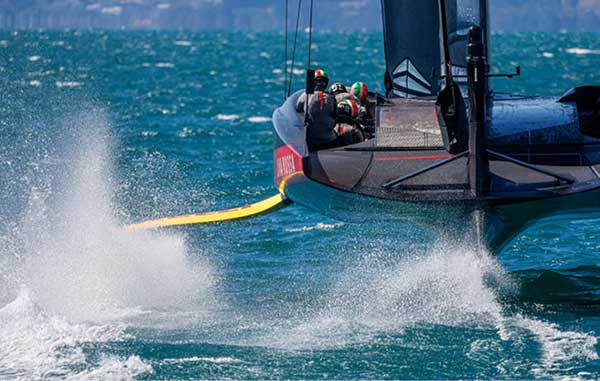
“I think we will see this time that teams are using human-in-the-loop simulation—a real-time environment where you can virtually sail the boat. With this method, the sailors learn the reflexes required to keep the boat flying. Ultimately, you still need people to learn to keep the boat stable, on the water and airborne,” he says.
“In the previous programs, we looked at a lot of the primary issues like the mainsail, the foresail and the shrouds,” says Stewart. “It would have been interesting to study how the position of the sailors along the deck and rig affected drag and lift. The teams had theories and intuition, but they couldn’t see it [with flow fields].”
When INEOS TEAM UK was building its first boat, it built a wooden mockup of the cockpit to let the sailors see and approve the layout. The same approach was used in the second boat to tweak the design based on the sailors’ feedback.
“The sailors have been included in decisions across the design process, including, for example, the foil controls and hull design. They are, after all, effectively the end users of our design process. Throughout the design process, it has also been useful to have the sailors sail the virtual boat in the simulator and give us their feedback,” says Starr.
More Altair Coverage
More Autodesk Coverage
More Nimbix Coverage
More NUMECA Coverage
Subscribe to our FREE magazine, FREE email newsletters or both!
Latest News
About the Author
Kenneth Wong is Digital Engineering’s resident blogger and senior editor. Email him at [email protected] or share your thoughts on this article at digitaleng.news/facebook.
Follow DE





